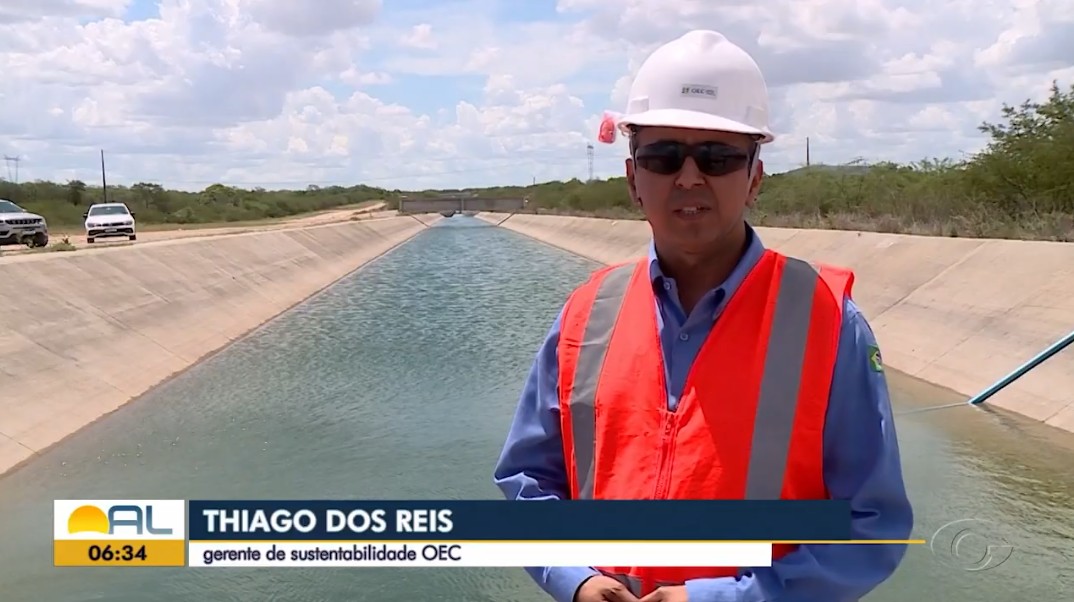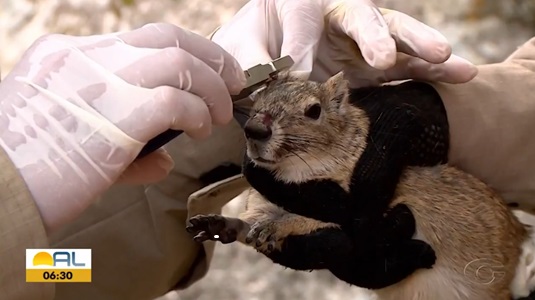The Young Builder class, a global program by Odebrecht Engineering & Construction aimed at developing young leaders and specialists,...
TV Gazeta shows report on fauna monitoring on the Canal do Sertão
DATE: 03/19/2025

A reporting team from TV Gazeta, the Rede Globo affiliate in Alagoas, was at stretch 5 of the Canal do Sertão to record the fauna rescue activity carried out on the project by the SOS Caatinga Institute team. OEC and TPF Engineering are the companies responsible for carrying out the work, contracted by the State Infrastructure Secretariat.
The fauna monitoring work is carried out by a specialized team of biologists and environmentalists, who have a field veterinary hospital for treating animals that need medical care. The activity is one of the conditions required by the Environmental Institute (IMA) to issue the project’s Environmental License.
In addition to reptiles and amphibians, one of the main specimens mapped is the Kerodon Rupestris, better known as the Mocó, a rodent mammal whose natural habitat is the Brazilian caatinga, a region of intense heat and scarcity of water and food. In the past, its population was very abundant, but today it is only found in protected areas, conservation units and more remote, hard-to-reach places. So far, 20 females and 13 males have been rescued. After being captured by ecological traps, the animals are measured, cataloged and mapped with rings, and released in a safe area.
Canal do Sertão
The section 5 of the Canal do Sertão from Alagoas is 26 km long, passing through the towns of São José da Tapera, Olho D’água das Flores and Monteirópolis. Once the fifth section is completed, the canal will be 150 kilometers long. At the end of the project, the largest water infrastructure project in Alagoas and one of the largest in Brazil should be 250 kilometers long, reaching the city of Arapiraca and benefiting more than one million people in 46 cities in the sertão and in the agreste of Alagoas. More than 800 jobs are expected to be created at the peak of the project, using primarily local labor.
Follow the link to watch the report:




No comments